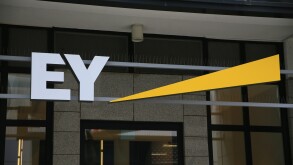Details of personal income tax reform released
On June 29 2018, China's Parliament, the National People's Congress (NPC), released the full text of proposed amendments to China's individual income tax (IIT) law (draft IIT bill). Public comments were sought up until July 28 2018. The upshot of the proposed changes is to reduce the tax burden on lower earners, reduce the relative preferences for foreign nationals under the existing IIT law, give greater recognition to personal circumstances and expenses in the IIT calculation, and introduce anti-avoidance provisions. The changes to personal deductions and tax brackets would take effect in part from October 2018, and the rest of the changes from January 2019.
Key amendments in the draft IIT bill include:
A new tax residence rule: At present, foreign nationals are treated as Chinese tax residents after one year of continuous presence in China. A continuous absence of 30 days in the year, or non-continuous absences of 90 days in the year, will be sufficient not to be regarded as resident. This is complemented by a further special concession, under which foreign nationals working in China will only be subject to China tax on their worldwide income after five years of continuous residence in China. It is now proposed that the one-year test will be lowered to 183 days, and the existing five-year concession, which is set out in the implementation rules of the IIT law, may be abolished. The latter point is yet to be confirmed. These changes would have important implications for the taxation of the income of foreign nationals that is sourced outside China;
The introduction of general anti-avoidance rules (GAARs): Such rules, modelled on those in the corporate income tax (CIT) law, would allow the tax authorities to adjust taxable income relating to asset transfers not at arm's length, avoidance using offshore tax havens, and other artificial tax-motivated arrangements;
The consolidated taxation of earned income: Four categories of income, covering salaries and wages, professional services, author's remuneration and royalties, will be consolidated and subject to progressive tax rates. Tax residents will transition from monthly filing to annual filing for such income. Existing categories of business income will be incorporated into this comprehensive income category, or a new 'income from operations' category, depending on their nature. Income from operations, interest income, dividends, leasing income, asset transfer gains, and other income will still be taxed separately, on a monthly basis, at separately prescribed rates;
Adjustments to income tax brackets: Comprehensive income is to be subject to the already existing progressive tax rates of 3% to 45%, though the seven brackets are now calculated on an annual as opposed to monthly basis. To relieve burdens on low earners the 3%, 10% and 20% brackets are widened, and the 25% bracket is narrowed. The subsequent 30%, 35% and 45% brackets kick in at the same income levels as before. 'Income from operations' will, as at present, be subject to progressive tax rates from 5% to 35%, though low earners are supported with entry to the 35% bracket starting at RMB 500,000 ($74,000) rather than the present RMB 100,000; and
Enhanced tax deductions: The personal deduction, taken against comprehensive income, will now rise to RMB 5,000 per month from RMB 3,500 for Chinese nationals and RMB 4,800 for foreign nationals, as at present. There is also an increased number of deductions to reflect personal circumstances including expenditures on dependent children's education, continuing education, serious illness medical treatment, housing mortgage interest and rentals. These complement the existing deductions for social security contributions (which cover basic pension insurance, basic medical insurance, unemployment insurance, and housing fund contributions). They also complement the more recent deductions provided for private health insurance and pension insurance. The latter one is still being piloted.
VAT and corporate income tax support for innovation activities
At an executive meeting of China's State Council on April 25 2018, Premier Li Keqiang announced that China would allow the research and development (R&D) super deduction bonus, for corporate income tax (CIT) purposes, in relation to R&D payments made to overseas service providers. This has now been put into effect.
Under the super deduction, a 150% deduction (i.e. a 50% bonus deduction) is available for eligible R&D expenses. This rises to a 175% deduction for science and technology small and medium enterprises (SMEs). Up until recently no super deduction was allowed in respect of R&D payments made to overseas service providers. Under the new Cai Shui (Circular) 64, issued on June 25 2018, 80% of the amount of such outbound payments can now qualify for the super deduction. This reflects the 80% cap that already existed for payments to domestic outsourced R&D service providers. However, a further limitation also exists that the super deduction for the outbound payments may only be enjoyed to the extent that they do not exceed two-thirds of the total qualifying R&D expenses incurred within China.
The technical contracts entered into for the outsourcing R&D activities must be registered with local science and technology administration where the domestic consignor is located. The new treatment applies retroactively from January 1 2018.
In the VAT space, China's State Council (i.e. cabinet) had announced in March 2018 a one-off refund of excess input VAT credits, accumulated over a specific period of time, for enterprises engaged in advanced manufacturing and R&D activities, as well as electrical grid operators. The entitlement to claim refunds of excess input VAT credits has long been a source of challenge for businesses, particularly those in the early stage of development or investment, as they typically must carry forward excess input VAT credits for offset against output VAT, in order to use them. The entitlement to a VAT refund had already been available for certain industries, such as integrated circuits, aircraft production and certain fuel supply businesses, though restricted to certain regions. The expansion of such treatment is consequently very welcome.
The particulars of the new treatment were set out on June 27 2018 in Cai Shui (Circular) 70. It has been specified that the following taxpayers are covered:
Enterprises in 10 key areas set out under the 'Made in China 2025' plan, including those engaged in manufacturing for new generation information technology, aerospace equipment, marine engineering equipment and high-tech ships;
High and new technology enterprises, advanced technology services enterprises and science and technology SMEs; and
All electrical grid companies with appropriate transmission or supply qualifications.
The refundable excess input VAT credits will be calculated as the taxpayer's excess input VAT amount at the end of the previous period, multiplied by the refundable proportion. The refundable amount is limited to the taxpayer's excess input VAT amount as at the end of 2017. It should be noted that the provincial taxation and finance authorities will determine lists of taxpayers eligible for the refund and the refundable amount for the taxpayers. The refunds will be processed by the end of September 2018.













